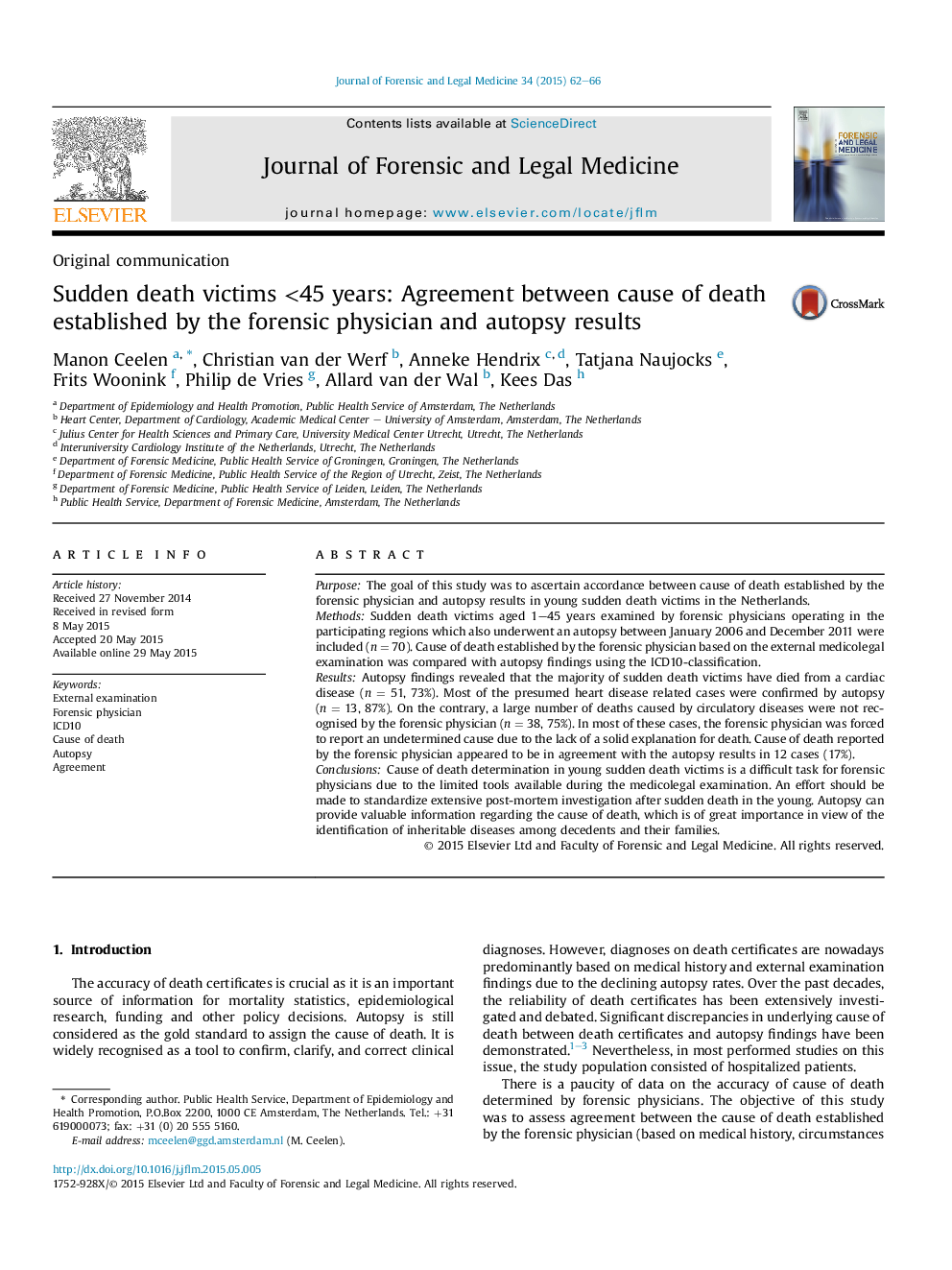| Article ID | Journal | Published Year | Pages | File Type |
|---|---|---|---|---|
| 101862 | Journal of Forensic and Legal Medicine | 2015 | 5 Pages |
•External cause of death determination in young sudden death victims is difficult.•We determined the accuracy of cause of death established by the forensic physician.•In a minority of the cases the forensic physician documented the correct cause.•Autopsy can provide valuable information regarding the cause of death.
PurposeThe goal of this study was to ascertain accordance between cause of death established by the forensic physician and autopsy results in young sudden death victims in the Netherlands.MethodsSudden death victims aged 1–45 years examined by forensic physicians operating in the participating regions which also underwent an autopsy between January 2006 and December 2011 were included (n = 70). Cause of death established by the forensic physician based on the external medicolegal examination was compared with autopsy findings using the ICD10-classification.ResultsAutopsy findings revealed that the majority of sudden death victims have died from a cardiac disease (n = 51, 73%). Most of the presumed heart disease related cases were confirmed by autopsy (n = 13, 87%). On the contrary, a large number of deaths caused by circulatory diseases were not recognised by the forensic physician (n = 38, 75%). In most of these cases, the forensic physician was forced to report an undetermined cause due to the lack of a solid explanation for death. Cause of death reported by the forensic physician appeared to be in agreement with the autopsy results in 12 cases (17%).ConclusionsCause of death determination in young sudden death victims is a difficult task for forensic physicians due to the limited tools available during the medicolegal examination. An effort should be made to standardize extensive post-mortem investigation after sudden death in the young. Autopsy can provide valuable information regarding the cause of death, which is of great importance in view of the identification of inheritable diseases among decedents and their families.
